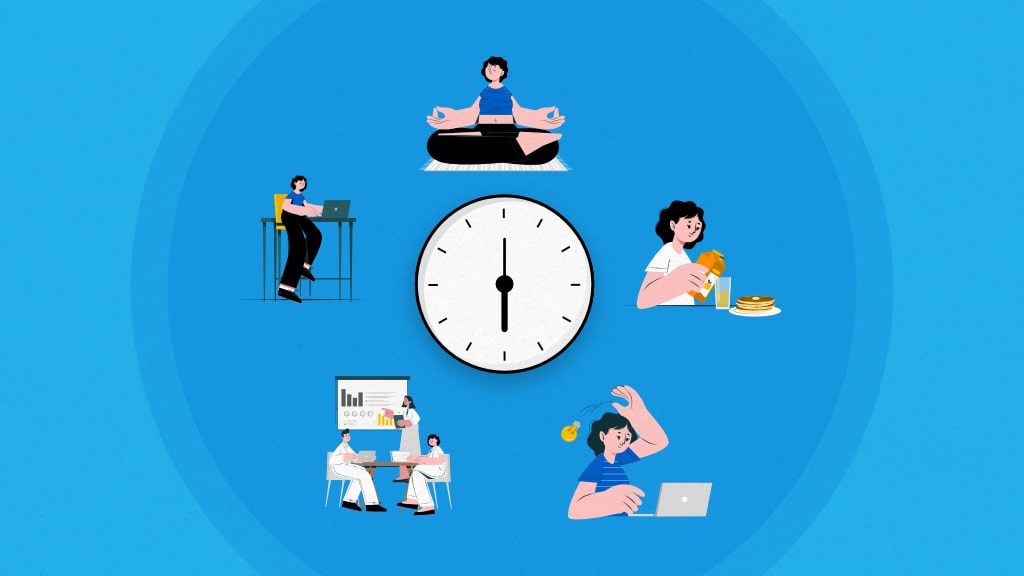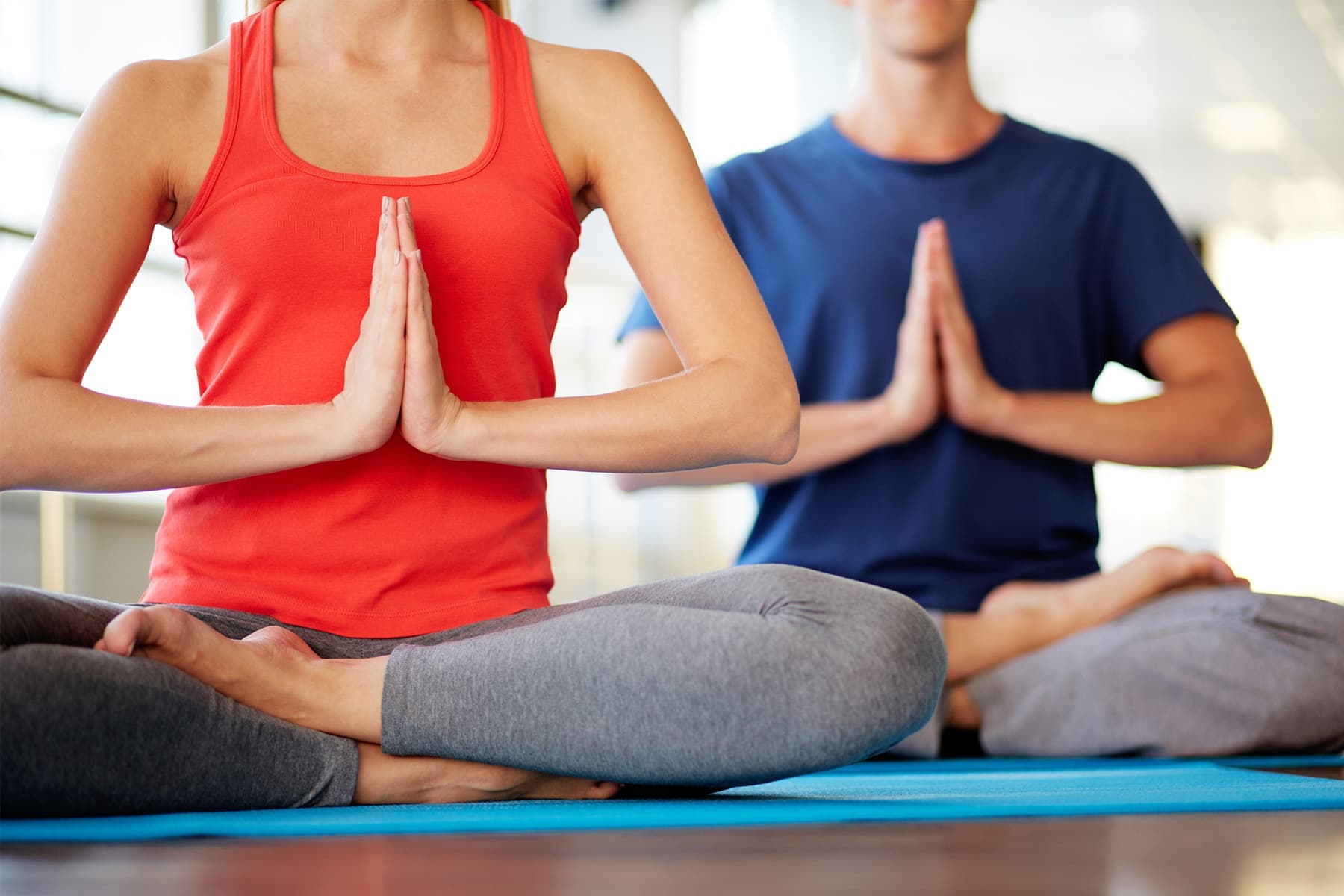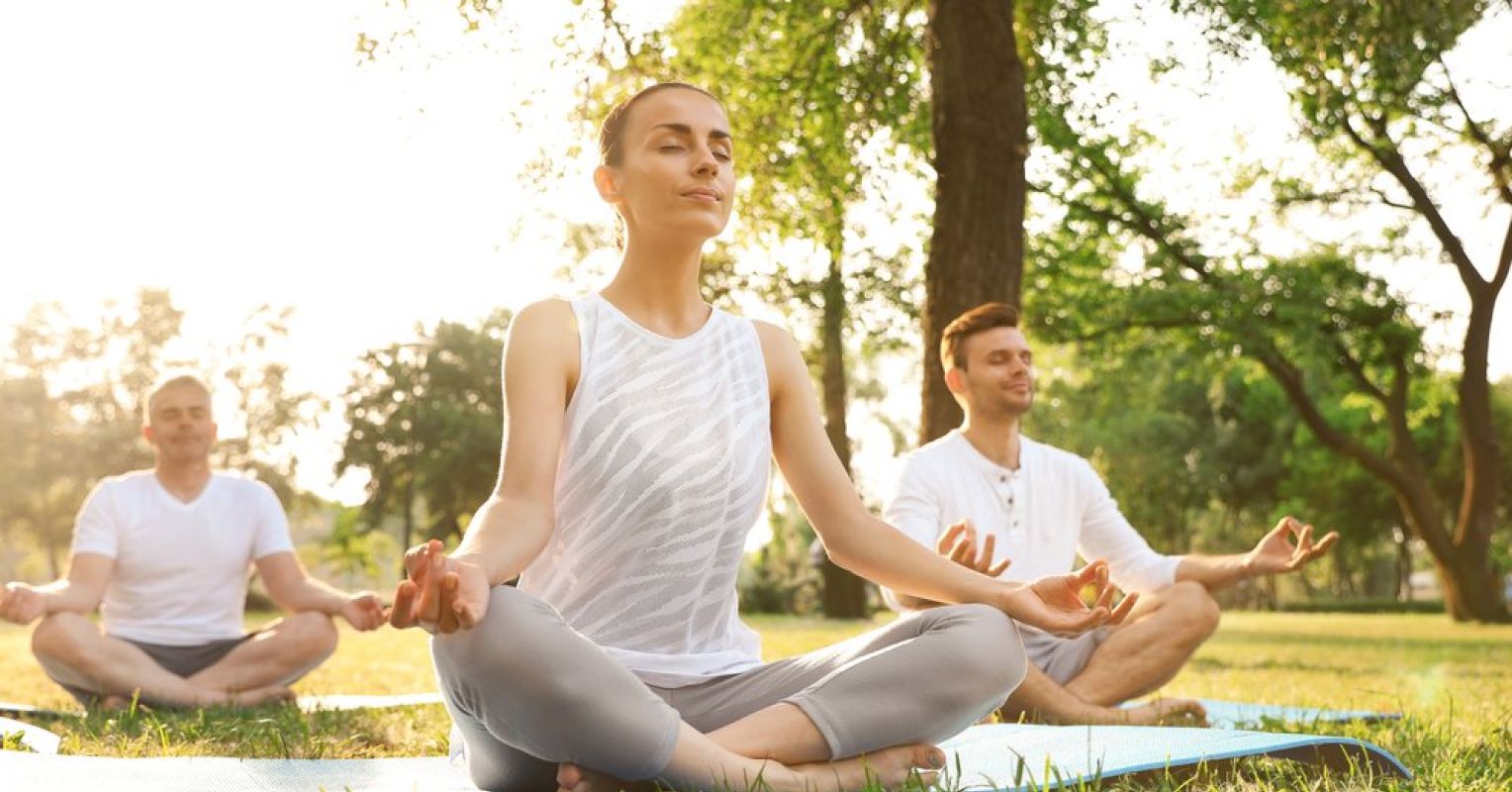Discover Pandipedia
Pandipedia is the world's first encyclopaedia of machine generated content approved by humans. You can contribute by simply searching and clicking/tapping on "Add To Pandipedia" in the answer you like. Learn More
Expand the world's knowledge as you search and help others. Go you!
Let's look at alternatives:
- Modify the query.
- Start a new thread.
- Remove sources (if manually added).
- Request a manual search from our human research team.

Creating a productive morning routine is essential for setting the tone of your day. By incorporating a few key activities, you can boost your mental clarity, energy levels, and overall productivity. Below are several strategies to help you craft a morning routine that aligns with your goals and aspirations.
Establish Consistent Wake-Up Times
One of the foundational elements of an effective morning routine is to wake up at the same time each day. Consistency helps regulate your body’s internal clock, making it easier to rise and feel alert. Experts suggest sticking to this schedule even on weekends, as it decreases the likelihood of feeling groggy or lethargic during your mornings[7][11].
Hydration: Start with Water
Drinking a glass of water immediately upon waking is a simple yet powerful step. This practice kickstarts your metabolism, flushes out toxins, and rehydrates your body after a night’s rest. Hydration can also greatly improve cognitive function and energy levels, preparing you mentally for the challenges ahead[5][9].
Movement: Incorporate Exercise

Engaging in physical activity in the morning can significantly boost your energy and mood. This could be as simple as stretching, yoga, or a short workout. Exercising releases endorphins, which enhance mood and mental clarity, setting a positive tone for the entire day[5][9][11]. As you build this habit, you may find it easier to tackle more demanding tasks later on.
Mindfulness and Mental Clarity
Starting your day with a mindfulness practice, such as meditation or deep breathing exercises, can help reduce stress and improve focus. Just a few minutes can center your mind and enhance your emotional balance, enabling you to approach your day with calmness and clarity[6][10]. Many find that incorporating gratitude practices—like writing down what they are thankful for—also contributes to a more positive mindset[9][11].
Nutritious Breakfast

Eating a balanced breakfast is crucial for sustaining energy and concentration throughout the morning. Prioritize meals rich in protein, healthy fats, and whole grains to maintain stable blood sugar levels and prevent mid-morning crashes. Simple options such as oatmeal with fruits or a protein smoothie are excellent choices that fuel both body and mind[6][9][10].
Planning the Day

Taking a few moments each morning to plan your day can significantly enhance productivity. Create a to-do list that prioritizes your tasks based on urgency and importance. This strategy can reduce the feeling of being overwhelmed and provide clear direction for the day[5][8][11].
Avoiding Distractions
One significant hurdle in establishing a productive morning is the temptation to check your phone or engage with social media first thing. Instead, try to keep these distractions at bay during your morning routine; focus on your established practices to maintain your mental clarity and intention for the day[9][10].
Embrace Technology Wisely
While technology can offer valuable tools for planning and efficiency, it can also be a source of distraction. Use apps mindfully to help manage tasks without allowing social media or emails to disrupt your focus[10][11].
Flexibility in Routine
Though having a structured routine is beneficial, allow for flexibility to adapt as your needs change. Life circumstances can affect your available time and energy in the morning. Whether you need more rest or have additional responsibilities, adjust your routine accordingly while aiming to keep core elements consistent[11].
Additional Considerations
Incorporating small, enjoyable activities, such as listening to music or a podcast during your morning tasks, can increase motivation and improve your mood. This enhances your overall experience and can turn mundane tasks into moments of joy[6][8].
Practicing self-care through grooming or simple mental reflection also contributes to a feeling of accomplishment and readiness for the day ahead. For instance, making your bed in the morning can instill a sense of order and achievement as you start[8][10].
Creating a morning routine tailored to your personal needs can drastically improve your productivity, mental health, and overall well-being. By experimenting with these strategies and adapting them to fit your lifestyle, you can design a successful morning regimen that propels you toward your daily goals. Start small, be consistent, and watch as your productivity flourishes throughout the day.
Let's look at alternatives:
- Modify the query.
- Start a new thread.
- Remove sources (if manually added).
- Request a manual search from our human research team.
Get more accurate answers with Super Search, upload files, personalised discovery feed, save searches and contribute to the PandiPedia.

Automatic Prompt Engineering (APE) automates the creation of prompts[1]. It involves a model generating multiple prompts, evaluating them, and refining the good ones, repeating the process[1].
Here's how it works[1]: First, a model is prompted to generate output variants[1]. Next, evaluate the generated prompts by scoring them based on a chosen metric such as BLEU (Bilingual Evaluation Understudy) or ROUGE (Recall-Oriented Understudy for Gisting Evaluation)[1]. Finally, select the prompt with the highest evaluation score for use; this can be further tweaked and re-evaluated[1].
Let's look at alternatives:
- Modify the query.
- Start a new thread.
- Remove sources (if manually added).
- Request a manual search from our human research team.

The current global economic challenges include rising geopolitical tensions, economic slowdowns in major economies such as China, surging financial stress due to high interest rates and elevated debt levels, trade fragmentation, and climate change impacts[1][3][4][5]. Geopolitical tensions, notably wars in Eastern Europe and the Middle East, have disrupted vital food and energy supplies and heightened uncertainty, negatively impacting investment and economic growth[5]. Additionally, the cost-of-living crisis is a significant short-term risk, exacerbated by inflation and supply chain disruptions[4]. Economic policies focusing on self-sufficiency and geopolitical goals have led to geoeconomic confrontations and the erosion of social cohesion, further straining global cooperation[3][4]. Finally, long-term environmental risks such as failure to tackle climate change, biodiversity loss, and ecosystem collapse pose severe threats to global stability[4][5].
Let's look at alternatives:
- Modify the query.
- Start a new thread.
- Remove sources (if manually added).
- Request a manual search from our human research team.
Let's look at alternatives:
- Modify the query.
- Start a new thread.
- Remove sources (if manually added).
- Request a manual search from our human research team.

The ability by Google to raise price whenever it desires is the definition of a monopoly, according to the Supreme Court.
MR. DAHLQUIST[1]
Only monopolies can consistently raise price on demand year over year without worrying at all what their competitors will do in response.
MR. DAHLQUIST[1]

The definition of a monopoly is a firm that can raise prices when it desires to do so.
MR. DAHLQUIST[1]
Firms make choices to maximize profits.
Mark Israel[2]
I don't think there is a market limited to search ads.
Mark Israel[2]
Let's look at alternatives:
- Modify the query.
- Start a new thread.
- Remove sources (if manually added).
- Request a manual search from our human research team.
Get more accurate answers with Super Search, upload files, personalised discovery feed, save searches and contribute to the PandiPedia.

Rosa Parks contributed significantly to the civil rights movement by refusing to give up her seat to a white man on a segregated bus in Montgomery, Alabama, on December 1, 1955. This act of defiance sparked the Montgomery Bus Boycott, a pivotal event that lasted for over a year, led by Martin Luther King Jr. and organized by the Montgomery Improvement Association. The boycott drew national attention to the systemic racism of Jim Crow laws and ultimately resulted in a Supreme Court ruling declaring bus segregation unconstitutional[1][4][5].
Parks, an active member of the NAACP, faced personal repercussions for her actions, including losing her job. She continued to work for civil rights, promoting fair housing and voter registration, and received numerous honors for her contributions, including the Congressional Gold Medal[2][4][5].
Let's look at alternatives:
- Modify the query.
- Start a new thread.
- Remove sources (if manually added).
- Request a manual search from our human research team.
Let's look at alternatives:
- Modify the query.
- Start a new thread.
- Remove sources (if manually added).
- Request a manual search from our human research team.

Yoga is an ancient practice that has gained immense popularity in the modern world due to its numerous health benefits for both the mind and body. Research has shown that yoga can significantly impact various aspects of well-being, from physical fitness to mental health.
Physical Health Benefits
Improved Flexibility and Strength
Yoga practices, especially asanas (postures), are well-known for enhancing flexibility. Many individuals take up yoga specifically to increase their flexibility, which is crucial for overall physical health. It has been shown that even low-intensity styles of yoga can improve flexibility, particularly in older adults, who often experience loss of this vital attribute as they age[4][5].
Not only does yoga enhance flexibility, but it also builds muscle strength. Various yoga poses require isometric contractions, leading to improved strength as practitioners hold the positions[5]. Regular practice, even for short durations, has been found to improve strength in both adults and children[6].
Enhanced Cardiovascular Health
Yoga contributes positively to heart health. Certain practices, such as pranayama (breath control), can lead to better cardiovascular function, including lower blood pressure and improved arterial health[10][11]. Studies have indicated that yoga can help manage hypertension and even lower lipid profiles in patients with cardiac issues[11].
Moreover, the combination of movement, breathwork, and mindful awareness in yoga helps regulate heart rate and enhances vascular function, which may protect against conditions like coronary artery disease[6][10].
Pain Relief and Joint Health
Research indicates that yoga can alleviate pain and improve mobility, particularly in individuals suffering from chronic conditions like arthritis and lower back pain[10]. Gentle yoga movements and deep breathing techniques aid in reducing inflammation and discomfort associated with these ailments[11].
Additionally, a study found that yoga can be especially effective in improving knee function and decreasing pain in people with osteoarthritis[3]. Those with sedentary lifestyles may also experience benefits such as increased mobility and reduced discomfort post-surgery[10].
Mental Health Benefits
Stress Reduction and Anxiety Management

One of the most significant benefits of yoga is its ability to reduce stress, which is increasingly important in today's fast-paced life. Studies have shown yoga to be effective in decreasing symptoms of anxiety and stress disorders, facilitating a more peaceful state of mind through mindfulness and relaxation techniques inherent in the practice[2][4][5].
Practitioners often report a boosted mood and reduced feelings of tension after regular yoga sessions. This is partly due to yoga's effect on brain chemistry, enhancing the levels of GABA, a neurotransmitter that produces calming effects similar to those provided by anti-anxiety medications[8].
Improved Emotional Well-being
The relationship between yoga and positive psychology is strong. Yoga encourages introspection and enhances self-compassion, making practitioners more aware of their emotional states and encouraging a non-judgmental approach to their experiences[2][4]. As a result, individuals practicing yoga frequently report lower levels of depression and better overall mental health[3][6][9].

Specific yoga practices, like yoga nidra, focus on guided meditation and body awareness, which can be particularly beneficial for those struggling with anxiety or PTSD[4][5][10]. Yoga's emphasis on breath control and mindfulness teaches practitioners how to remain in the present moment, further supporting mental clarity and emotional stability.
Cognitive Benefits
Enhanced Brain Function
Yoga has been linked to improved cognitive functioning. Research shows that regular practitioners may have greater grey matter density in areas of the brain associated with memory and learning, potentially counteracting age-related cognitive decline[8][10].
Studies using brain imaging have shown that yoga contributes to increased attention, awareness, and faster reaction times. By improving functional connectivity within the brain, yoga supports the nervous system and encourages cognitive resilience to stressors[10][11].
Mindfulness and Increased Awareness
The meditative aspects of yoga promote mindfulness, which enhances participants' awareness of their bodies and minds. This heightened sense of presence not only contributes to immediate emotional benefits but prolongs positive effects outside of yoga practice, influencing daily behaviours and decisions[10][11].
Practitioners report improved relationships with their bodies, including better body image and more mindful eating patterns, which can lead to healthier lifestyle choices[11].
Conclusion
Yoga is a holistic practice offering a multitude of benefits that enhance physical health, emotional well-being, and cognitive function. Its capacity to improve flexibility, strength, cardiovascular health, and pain relief, coupled with its profound positive influences on mental health, makes it a valuable practice for individuals of all ages. As the science supporting yoga's health benefits continues to grow, its integration into mainstream health practices is likely to expand, confirming its role as a vital tool for enhancing overall well-being.
Let's look at alternatives:
- Modify the query.
- Start a new thread.
- Remove sources (if manually added).
- Request a manual search from our human research team.

Impressions are a good metric of awareness, of causing awareness, and that's the measure that's used for display ads and social media ads.
KINSHUK JERATH, Ph.D.[1]
Clicks are sort of some kind of action, is a good metric for lower funnel, and that's how search ads are priced.
KINSHUK JERATH, Ph.D.[1]

We don't have better algorithms than anyone else. We just have more data.
Speaker or author name[2]
The standard in the industry for everybody else is, you know, you pay and you hope that you get some.
Speaker or author name[2]
Google reduced the information in the query report, limiting the visibility into specific queries. They describe it as a massive decrease.
MR. DAHLQUIST[4]
Let's look at alternatives:
- Modify the query.
- Start a new thread.
- Remove sources (if manually added).
- Request a manual search from our human research team.